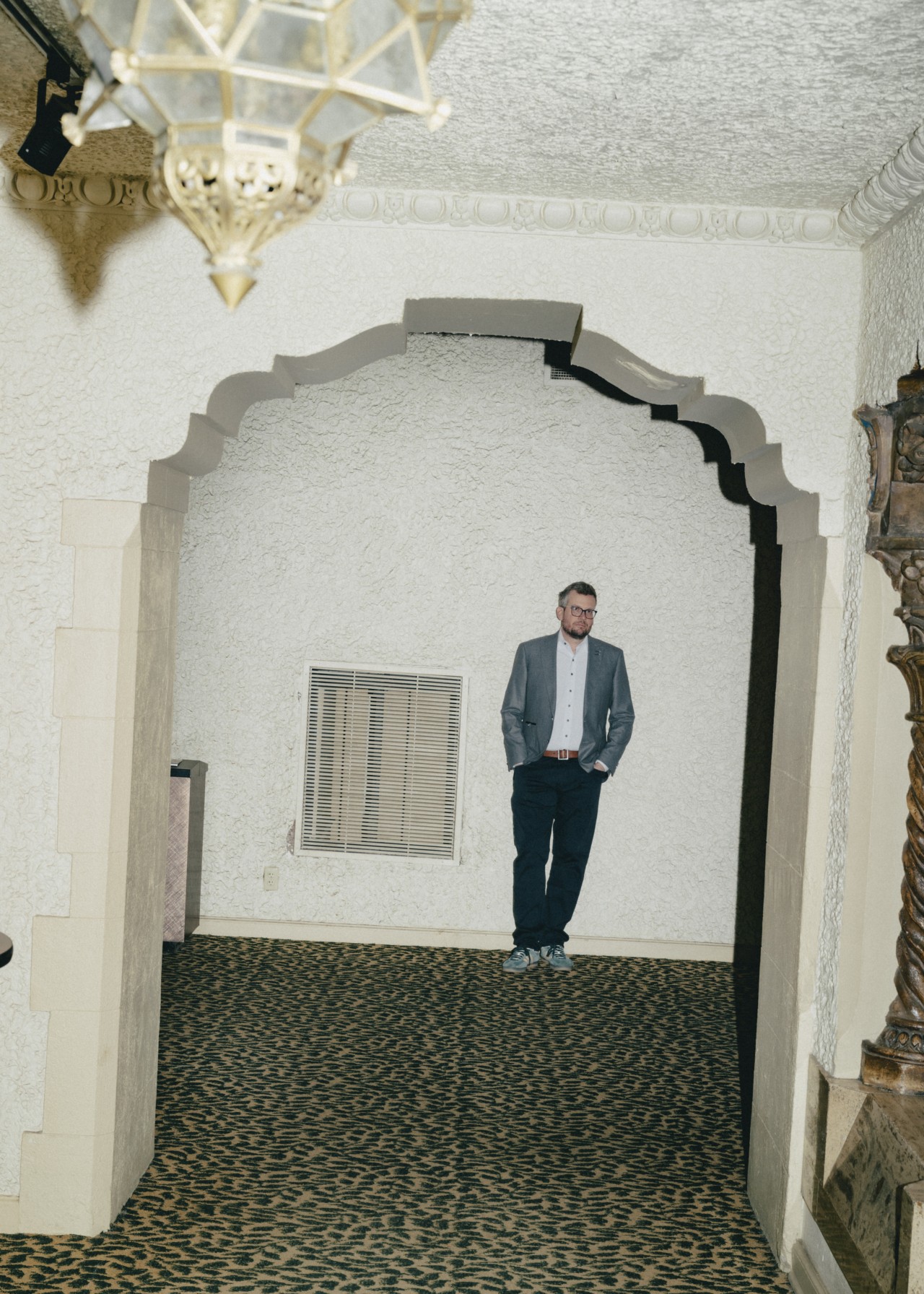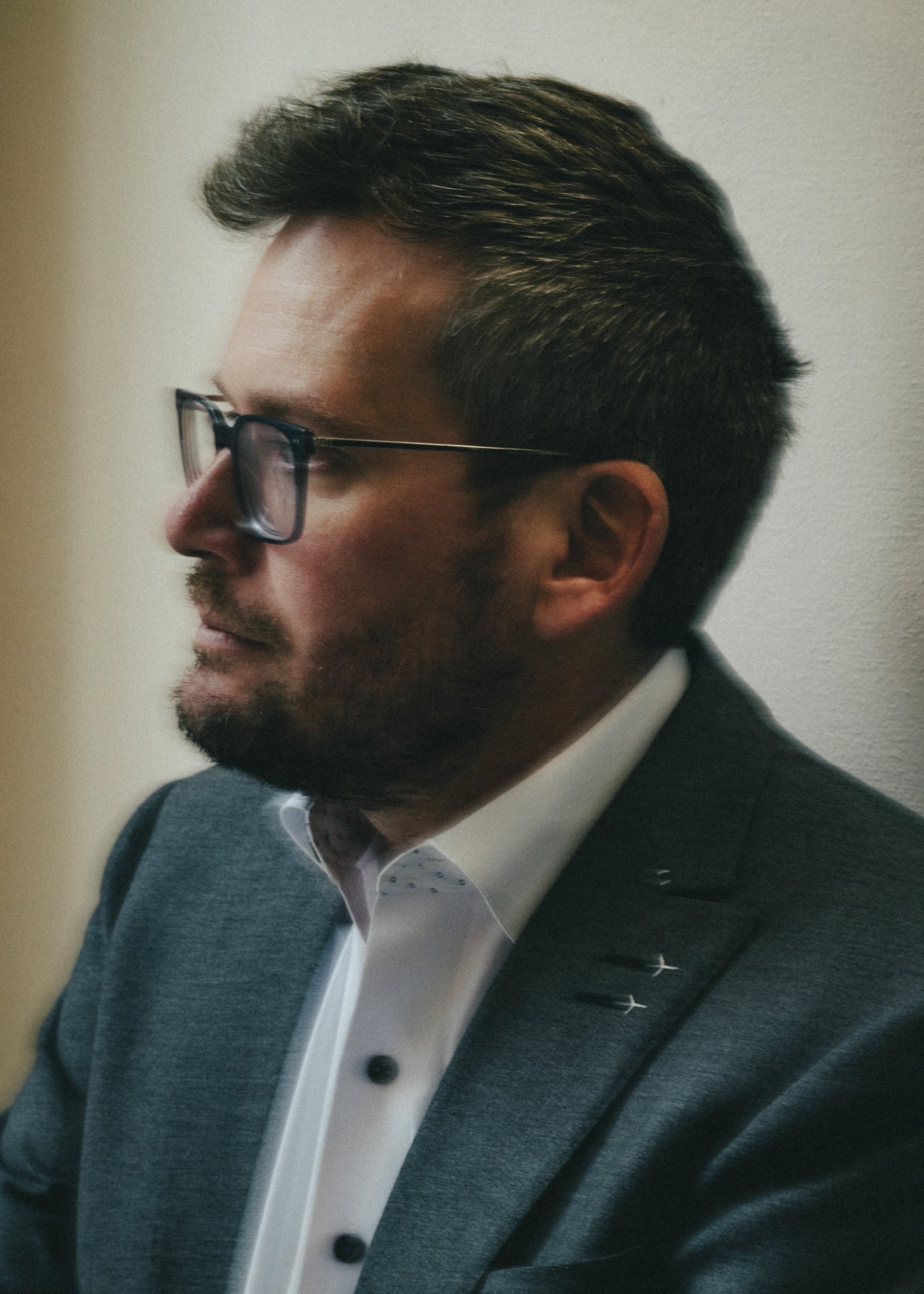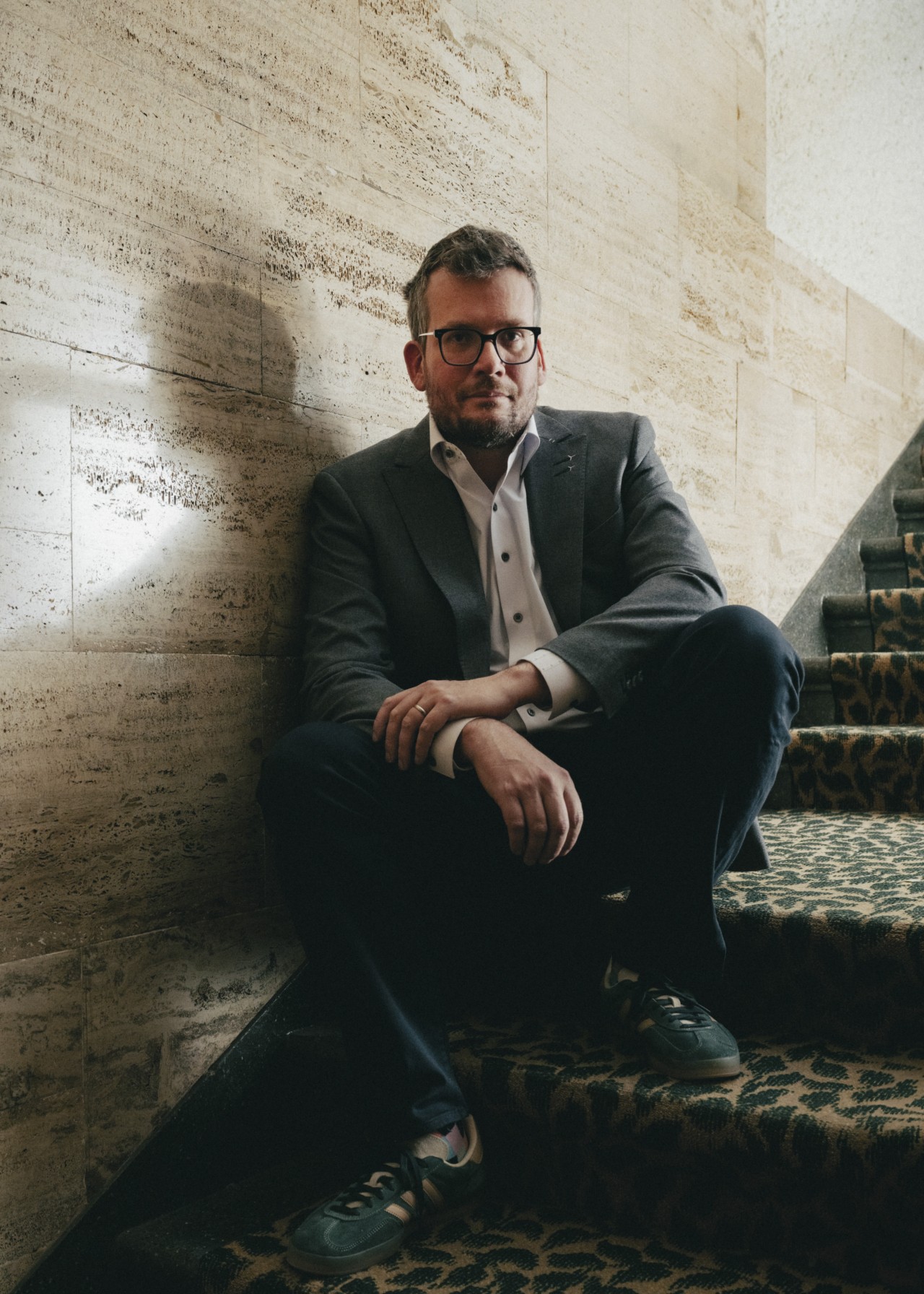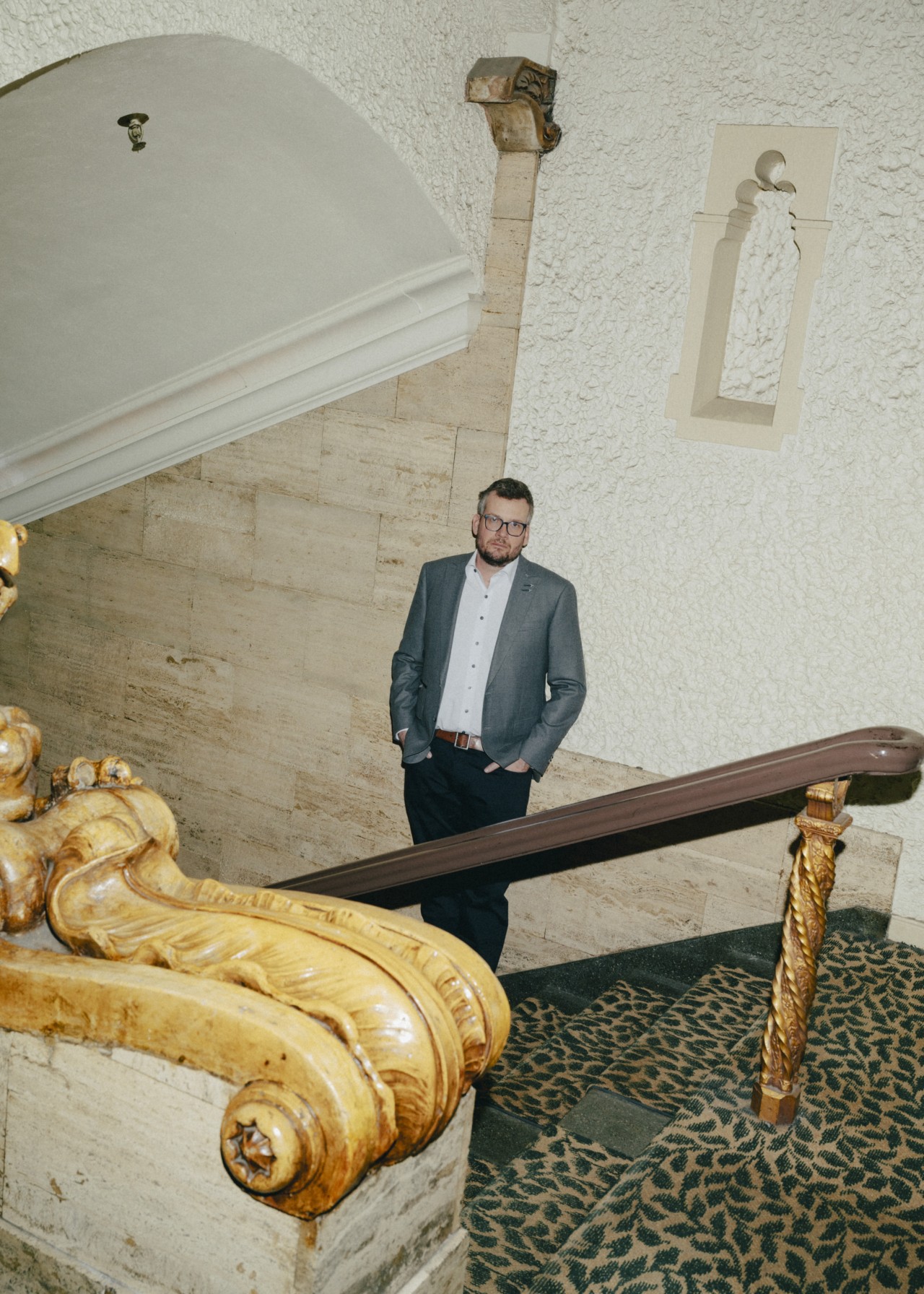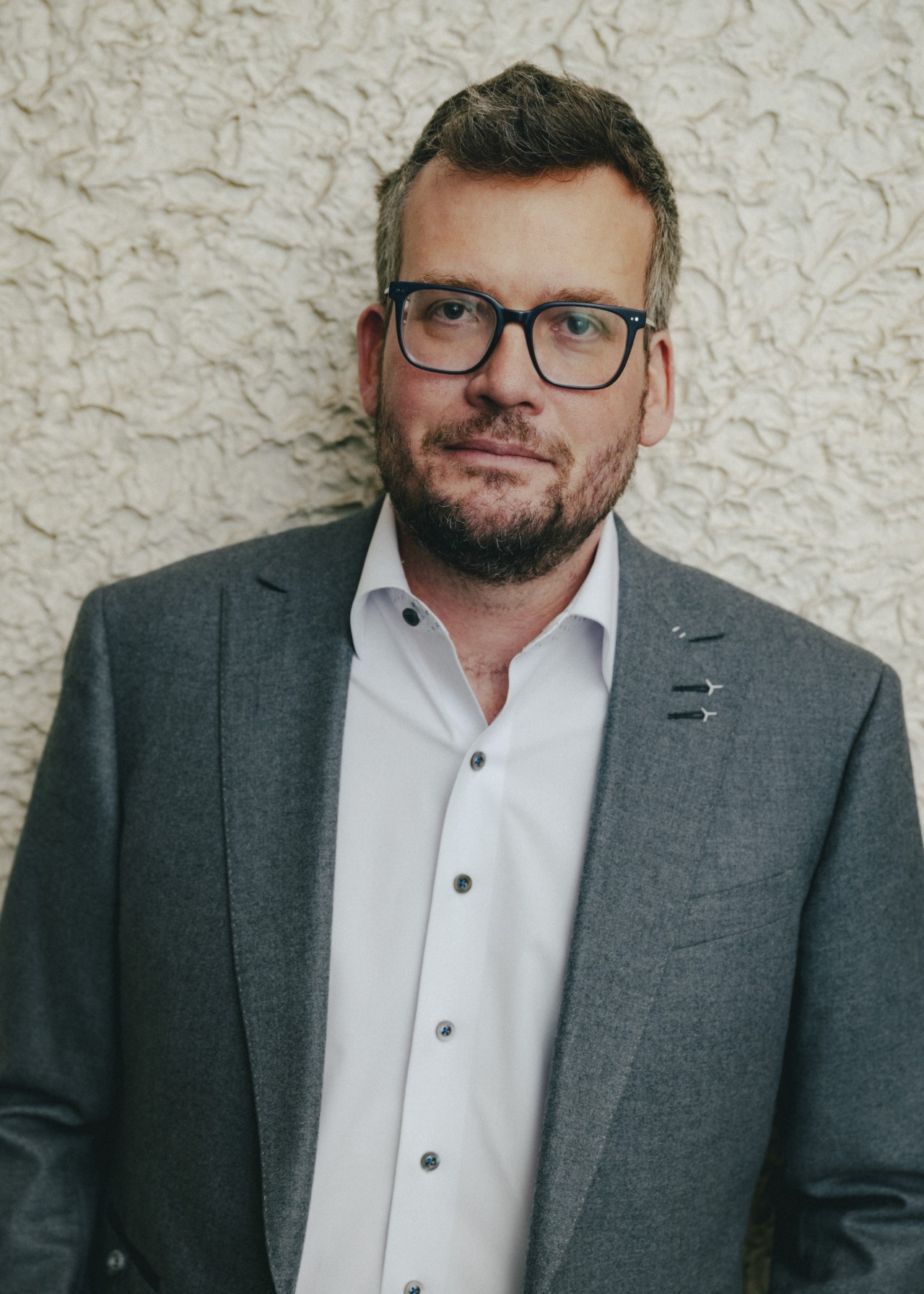

WORDS BY JASON P. DINH
photographs by lyndon french
You might be surprised to learn that John Green is a tuberculosis activist.
If you’re like me, you recognize Green as the author of best-selling young adult novels such as The Fault in Our Stars and Looking for Alaska. Maybe you’ve seen him and his brother, Hank, on YouTube as the hosts of Crash Course or from their channel, vlogbrothers. You might even be a fan of English soccer and recognize him as the sponsor of the fourth-tier club, AFC Wimbledon. But for the past five years, the modern-day polymath has been laser-focused on one mission: eradicating TB, humanity’s deadliest infectious disease.
“TB has become the organizing principle of my professional life over the last five years. It’s nice to have something to think about before bed, and in the morning, while brushing one’s teeth, and while walking in the woods—and what I think about is tuberculosis,” Green writes in his new book, Everything is Tuberculosis: The History and Persistence of Our Deadliest Infection.
Green has fought for the United States to provide TB aid in low-income countries; pressured pharmaceutical companies to lower the cost of tests and medications; and rallied his fans—called Nerdfighters—to raise over $3.5 million for nonprofits. His latest book attempts to resolve a paradox: that TB is curable, yet still kills more people than any other infectious disease. Green lands on a damning explanation: that people only die because of unjust social systems. He concludes that TB today isn’t caused by the bacterium. It’s caused by us.
“The infection has long exploited human biases and blind spots, wriggling its way through the paths injustice creates,” Green writes. “For centuries, the disease has used social forces and prejudice to thrive wherever power systems devalue human lives.”
Green makes his case through the story of Henry Reider, a Sierra Leonean who contracted a severe case of TB as a child. In a just world, Henry would never have contracted TB. Poverty and malnourishment made his case more likely.
Under-resourced health care systems couldn’t diagnose him early. Western policies and profiteering pharmaceutical companies obstructed the best treatments from reaching him. Like Henry, more than 10 million people still contract TB each year, a burden shouldered disproportionately by poorer countries. TB still kills over 1 million people annually.
Climate change now exacerbates the unjust conditions that allow TB to fester. Natural disasters forcibly displace people into overcrowded living conditions with little medical access. Climate change also threatens food security. That’s problematic because while TB suppresses one’s appetite, hunger roars back once treatment starts—a good sign, but only if you have enough to eat. Global heating is even deepening global inequality, carving a wider riverbed for TB to course through.
Both TB and climate change are solvable, yet remain unsolved. Their persistence is an indictment of our species’ worst vice: our lack of respect for people and the planet. “And so we have entered a strange era of human history: A preventable, curable infectious disease remains our deadliest. That’s the world we are currently choosing,” Green concludes.
As Green prepares for the release of Everything is Tuberculosis, he joins Atmos to discuss the connections and parallels between two of humanity’s most pressing crises—and what our failure to solve either says about us as a species.


Jason P. Dinh
I was surprised to learn that you’re a TB activist. How and when did that start?
John Green
Yeah, it’s a bit of a departure from being a young adult novelist.
In 2019, my wife and I were visiting Sierra Leone. We’ve supported the maternal health care system there for a number of years. On our last day there, some doctors asked us to visit the tuberculosis hospital. When I got there, a little kid grabbed me and pulled me by my shirt to show me the laboratory, the kitchen, and the dorms. He was just an incredibly precocious, lovely little kid, and he shared a name with my son—Henry, who was 9 at the time. They looked like they were the same age. It was just a wonderful, serendipitous connection.
As we left the hospital, the doctors told me that Henry was a patient—and one of the ones they were most concerned about. Turns out, he wasn’t 9 years old like I thought; he was 17. He had been so stunted by malnutrition and TB that he looked younger. That’s what started my fascination with tuberculosis and eventually spurred my activism and advocacy.
Jason
Why did you center your book around Henry instead of the other TB patients you know?
John
There are so many people who are worthy subjects of the book who either live with TB or treat the disease, but I wanted to write about Henry because he embodies some of the 18th- and 19th-century romantic ideals around tuberculosis. He’s a poet, and tuberculosis was seen in the 19th century as a disease associated with poetry and with a sensitive disposition. He also saw his body consumed by the disease to a great degree, and that was lifted up as a beauty ideal in the 18th and 19th centuries.
Jason
The romanticized history of TB is fascinating. Could you elaborate?
John
There are so many examples of TB being romanticized. It was seen as a disease that made women beautiful and made men brilliant. It’s astonishing the degree to which this disease was seen as ennobling.
One example is that as Charlotte Brontë’s sister was dying of TB, Charlotte Brontë wrote, “Consumption, I am aware, is a flattering malady.” Another example is Percy Shelley writing to John Keats as Keats is dying of tuberculosis, “This consumption is a disease particularly fond of people who write such good verses as you have done.” Everywhere you look in 18th- and 19th-century European and American literature and art, you see this romanticization.
Although Henry had those same qualities, his experience was very different because of when and where he was born. Rather than a romanticized experience, he had a stigmatized one. Many of his friends and family members stopped interacting with him. He was fortunate to be cared for throughout the process by his mother, Isatu, without whom Henry’s story might have been very different.

“Death from TB is not caused by bacteria anymore; it’s caused by human choice. It’s caused by human-built structures and systems.”
Jason
You wrote that your wife says that you see tuberculosis in everything and everything in tuberculosis. Are there any surprising examples of that conversation happening?
John
Every conversation I have goes back to tuberculosis. I was just at a soccer game—I love this fourth-tier English soccer team, AFC Wimbledon—and I was drinking a beer with an old friend. They mentioned something about this hospital where their dad was a patient. And I said, “That used to be a TB hospital,” which it did.
Everything comes back to TB for me. I think it’s impossible to understand the history of humans without understanding the history of tuberculosis. It’s also impossible to understand the history of tuberculosis without understanding the history of humans. Tuberculosis is a disease of injustice. It’s a disease that has flowed through the riverbeds that we have dug for it.
Jason
You go as far as saying that TB today is being caused not by bacteria, but by social injustice. Could you explain that?
John
For most of human history, you could argue that TB’s ultimate cause was a bacterium, Mycobacterium tuberculosis. But in the 70 years since we’ve had a cure, we’ve still allowed 150 million people to die of the disease. Death from TB is not caused by bacteria anymore; it’s caused by human choice. It’s caused by human-built structures and systems. We have to acknowledge that, since we’ve had the cure, TB has been caused by us.
Jason
You write that TB not only courses through social injustice—it deepens it, like a vicious cycle. Could you provide an example?
John
TB is a disease of poverty that worsens poverty. Almost half of people who get TB have to spend 20% or more of their income on treating it. People are put out of work, they are forced to go to a clinic every day to take their medication, and transportation and childcare can be expensive. So it’s a disease closely associated with impoverishment that worsens impoverishment.
It’s also a disease that is associated with poor health that worsens poor health. If you have other healthcare problems, like diabetes or HIV, you’re much more likely to develop active tuberculosis, which in turn can make those pre-existing problems much worse.
TB is often a disease of vicious cycles, but I also write in the book about how it can be a disease of virtuous cycles. For instance, there are TB survivors who have made it possible for more people to survive TB.
Jason
We don’t think about TB in the U.S. very often, but unfortunately, it has been in the news. Kansas is experiencing a large outbreak right now. Meanwhile, President Donald Trump is making it harder for public health officials to respond by kneecapping the Centers for Disease Control and Prevention. Internationally, he’s stripping international funding for TB relief efforts by effectively shutting down the United States Agency for International Development. How do you think about these new developments in the context of this social injustice argument you make in your book?

John
Domestically, we see about 10,000 cases of active tuberculosis a year, so this is a disease that is circulating in the United States and that we should be worried about. Because of the kneecapping of monitoring and response in public health circles, we will see more tuberculosis in the United States. I’ll be frank: That should scare the pants off of us.
Globally, the United States has long been the main funder of tuberculosis response. I just got a text message from Atul Gawande, who was the assistant administrator of global health at USAID in the previous administration, showing me a picture of tuberculosis medications sitting in a warehouse in East Africa. The medications have already been paid for, but they’re not being distributed because the funding was cut.
Interrupting a patient’s course of TB treatment is catastrophic. Disrupting it for even a couple of weeks means a far higher chance of drug resistance developing. That makes the disease harder to cure on an individual basis, but it also means there is more drug-resistant TB circulating, which poses a societal threat. We are giving this bacteria millions of opportunities right now to develop resistance because we’re denying millions of people access to medication. This is an absolutely catastrophic decision by the Trump administration, and I can only hope and pray that it is reversed immediately.
Jason
The idea of seeing everything in tuberculosis and tuberculosis in everything resonated with me because there’s an adage in climate work that climate change is everything and everything is climate change.
In your previous book, The Anthropocene Reviewed, you said that you often get climate anxiety. I’m wondering, then, if those climate concerns stretch into your TB work. Are there any intersections between TB and climate change that you and others are working on or worried about?
John
The first thing I’d say is that like climate change, tuberculosis is a disease that is essentially caused by the rich world and borne by the poor world. That’s the first intersection—that global resource distribution systems are doing a poor job of distributing resources appropriately, which is one of the reasons both climate change and tuberculosis disproportionately affect people in impoverished countries.
But I do think there are other intersections. For example, as climate change moves people around and forces them into crowded living conditions, we’ll see more tuberculosis, and that’s certainly something that researchers are looking at right now.
Jason
I was also thinking about how TB and climate change are solvable at the scientific level. We’ve known about the risks of climate change since 1856 when Eunice Foote described carbon dioxide’s capacity to absorb heat.
John
Right—that’s about the same time we knew tuberculosis was caused by bacteria.

“We know how to live in a world without climate change, and we know how to live in a world without tuberculosis. That we haven’t yet chosen to live in those worlds is a great disappointment to me—but science remains a source of hope.”
Jason
Exactly. Science has known about the issues for centuries and has had solutions for decades, but we’re just not seeing action commensurate to the crises. What does our inaction say about us as a species?
John
It reflects a damning aspect of our species. We struggle to empathize with suffering that we do not feel proximal to, and because both tuberculosis and climate change disproportionately affect the most marginalized, most vulnerable people in the world, we are choosing not to respond in the same way we would if they were affecting the richest and most powerful people.
In time, climate change will affect us all and it will reshape the human species on a scale that we’ve not seen in a very long time. And if we’re not careful, tuberculosis might too. Right now, we’re giving tuberculosis so many opportunities to evolve further resistance to the tools that we’ve developed for it, and frankly, we haven’t done a very good job of developing new tools.
You’re right that on a scientific level, we know how to solve both problems. We know how to live in a world without climate change, and we know how to live in a world without tuberculosis. That we haven’t yet chosen to live in those worlds is a great disappointment to me—but science remains a source of hope.
I go back to something that Louis Pasteur said in the late 19th century: “It is a terrifying thought that life is at the mercy of the multiplication of these minute bodies.” That these microorganisms crawling in us and on us can destroy us was mortifying in the 19th century. But he also said, “It is a consoling hope that science will not always remain powerless before such enemies.” And I believe that. I believe that we don’t have to be powerless. That’s my hope and my prayer.
Jason
I love that. Those Pasteur quotes feel like they apply to greenhouse gas molecules as much as pathogens.
John
Yes, yes!
Jason
I want to leave space for Henry because he was so generous in sharing his story. What takeaways would he want readers to leave with?
John
Well, I think the main takeaway that Henry would want is for everyone to subscribe to his YouTube channel, which you can find by Googling “Henry Reider YouTube.” Henry and I are so close that it’s hard to talk about our friendship in any way other than joking around.
But Henry has become a huge advocate for tuberculosis survivors, especially people living at Lakka, the tuberculosis hospital in Sierra Leone. That’s a lot of the work that he does on his YouTube channel. I think it’s so important to listen directly to voices from impoverished communities—and Henry’s voice has become a very powerful one that’s been beautiful to watch.
Editor’s note: This interview has been edited for length and clarity.
For John Green, Tuberculosis Is Everywhere—Even in Climate Change
